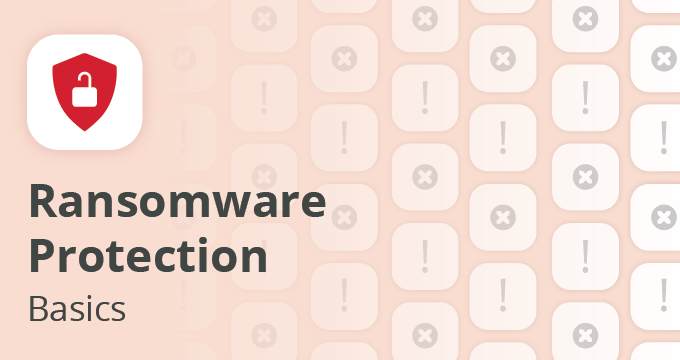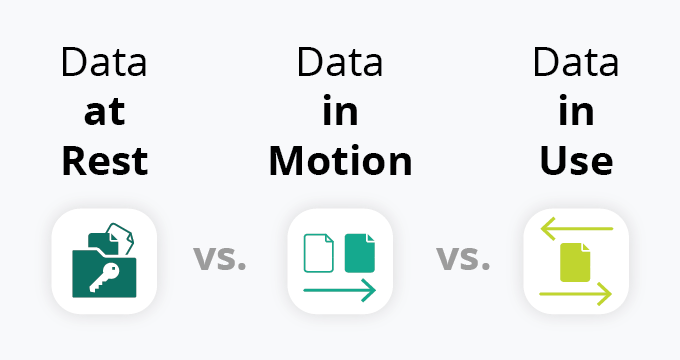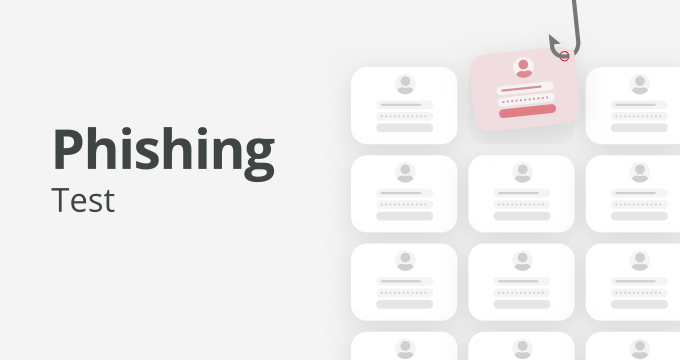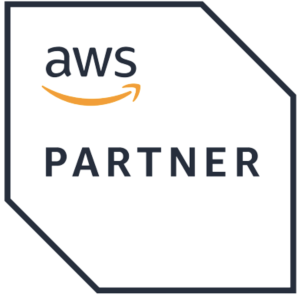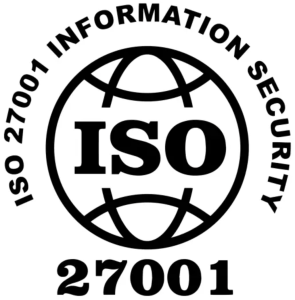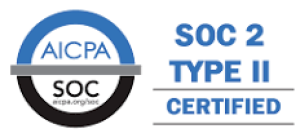Many businesses have been shaken by the fast emergence of ransomware in recent years. And they aren’t just being paranoid in their concerns about threats to their organizations, IT, and security.
There’s a reason ransomware gets so much attention. It’s the type of attack that draws attention because it’s unexpected, severe, and leaves the victim feeling powerless.
What is a ransomware attack?
According to Gartner, ransomware is a type of cyber extortion in which “malicious software infiltrates computer systems and encrypts data, keeping it hostage until the victim pays a ransom”.
In a typical ransomware attack, the hacker encrypts your data using malicious software (malware), which is commonly supplied by an infected attachment or a link in an email.
The hacker then demands payment, threatening that you’ll never see your data again if you refuse. Without an efficient recovery method, you may believe that paying the ransom and hoping for the best is your only alternative.
How is ransomware distributed?
Ransomware is frequently distributed via email phishing messages containing malicious links or by drive-by downloading. Drive-by downloading occurs when a user visits a contaminated site unintentionally and malware is downloaded onto the user’s computer or mobile device.
A drive-by download typically takes advantage of an out-of-date browser, application, or operating system with a security flaw. Ransomware then exploits these vulnerabilities to proliferate to additional systems.
| Related: Phishing Test: Check Your Employees’ Resilience |
What are the different types of ransomware?
Because each ransomware variety is often designed to attack a particular, unique network, their behavior might vary greatly.
It’s critical to comprehend the various types currently in use and keep in mind that it is also possible to combine multiple types of ransomware.
Here are six different forms of ransomware:
- CryptoWall is responsible for a significant proportion of ransomware attacks. It typically targets its victims via phishing emails.
- Locky performs exactly what its name says — it locks you out of files and replaces the files with the extension .lockey. Locky is unique in that it spreads to other files across the network faster than other ransomware variants.
- Maze is a ransomware version that represents a trend known as “leakware.” After encrypting the data, the attackers threaten to publish the ransomed private data on the dark web unless the ransom is paid.
- Crysis takes data attacks to a whole new level, kidnapping your data and transporting it to a new virtual location. This component of the assault is significant since it counts as a breach if your firm deals with personal data — organizations must notify anybody who may have information on their network in order to comply with local, state, and federal rules.
- Cerber assaults the database server processes instead of going for the files. Its authors offer ransomware software to criminals in exchange for a percentage of the ransom collected.
- Samsan targets unpatched WildFly application servers in their network’s internet-facing section. After entering the network, the ransomware searches for more computers to attack.
Ransomware awareness and prevention must be at the forefront of enterprises’ security efforts. Unfortunately, because hackers are becoming ever more skilled in encrypting data and generating new ransomware, you must keep up with those advancements.
What motivates ransomware attacks?
So what motivates hackers to carry out ransomware attacks? Here are the three most common reasons:
- Greed. Making money is a significant motivator. Cryptojacking, for example, has become a common means of stealing computational resources within an enterprise in order to mine bitcoin.
- Political reasons. Malicious actors may be motivated by political considerations, such as the use of ransomware to support terrorism.
- Competitive (or personal) reasons. Sometimes hackers hack into systems to sabotage their competition. They may intend to remove data, disclose data, or disrupt corporate services.
Regardless of their goal, hackers frequently employ password spraying tactics to obtain unwanted access to an organization or system. They may also attempt to exploit vulnerabilities, infiltrate botnets, and install rootkits in order to steal and erase data or damage an organization’s capacity to function.
What is ransomware protection?
The cyber threat environment, including ransomware, has moved from “if” to “when.” To secure data recovery, you need an appropriate solution with the greatest technology, people, and procedures.
Organizations require technologies (such as anomaly detection, immutable backups, air gaps, and multi-factor authentication (MFA) restrictions) to continuously monitor and defend their level of recovery preparedness.
They use this to uncover and rectify vulnerabilities, assess the recoverability of their data and business applications, and enhance their security in order to minimize their risk profile. In the event of a successful attack, quick restores are required to quickly resume business operations.
A recovery solution is only practical if it can withstand several failure scenarios. Designing recoverability across environments and offering simpler automation to test and validate each scenario contributes to the status of recovery preparedness.
Knowing that mission-critical data and apps have previously been approved for recovery through an automated process provides the necessary ransomware protections, security, compliance, and comfort level.
Ransomware protection measures
The objective is to lessen the dangers and impacts of ransomware. Mitigation of ransomware necessitates a mix of best practices and ongoing awareness, as well as a tiered security strategy.
Ransomware prevention measures include:
- Plan ahead — plan for the worst-case scenario and pray you never have to use it. It is critical to have a multi-layered security strategy in place and to remember the importance of recovery readiness.
- Install anti-virus and anti-malware software — use anti-virus software with active monitoring to prevent advanced malware attacks.
- Implement multi-factor authentication — The authentication procedure needs each user to meet a unique set of criteria in order to obtain access. Enabling multi-factor authentication (MFA) techniques makes impersonating a genuine user account very unlikely.
- Regular backups are crucial — Use a backup and recovery system that provides a multi-layer structure for protecting, monitoring, and recovering from threats on a regular basis.
- Ensure that patches are up to date and current — To reduce the risk of ransomware exploiting common vulnerabilities, keep the software, firmware, and applications up to date.
- Segment your networks to avoid lateral movement — If a hack is successful, don’t allow the attackers unrestricted access to your network. To avoid lateral movement and to restrict the harm, divide your network into smaller pieces.
- Understand your data — Recognize business-critical and sensitive data throughout your environment. Then, determine whether the data is vulnerable. Using data insights, you can quickly mitigate these risks by eliminating, transferring, or protecting exposed data to lessen the likelihood of expensive breaches and ransomware attacks.
- Provide employee security training — Employees are vital to a successful defense. They should be educated on how to avoid ransomware and recognize phishing efforts, strange websites, and other frauds. Employees, despite their best efforts, are nevertheless a major source of infection.
- Don’t forget to test — After you have your strategy in place, together with the procedures and technology to carry it out, ensure that it will perform as expected. Test on a regular basis to ensure that you can protect and recover high-priority data and applications.
Prevention of ransomware does not have to be difficult. You can reduce the danger of ransomware with appropriate preparation, which includes formulating a strategy, frequent monitoring, and a secure backup and recovery solution.
Should you pay the ransom?
Paying a ransom is a contentious issue, and only you can choose what’s best for your company.
Consider the following factors:
- Will the hackers actually give you the keys to retrieve your files back?
- Will it leave malware behind so that it may strike again?
- Will you become a target in the future because of your readiness to pay?
Remember that even if you pay the ransom, there is no assurance that all of your data will be recovered. Even with the encryption keys, it might take days, weeks, or even months to recover anything.
Also, keep in mind that many government security services advise against paying, and in some countries, paying the ransom may even be illegal.
Wrapping up
Ransomware is a threat to your organization, and you must stay vigilant.
But protection against ransomware doesn’t need to be difficult. It is a matter of having the proper technology in place and using it to routinely test and validate your recovery preparedness.
Remember, a ransomware attack doesn’t have to mean the end of your company. With the right preparation, you can defend against hackers, protect your data, and recover quickly.
Jatheon is a data archiving company specializing in the long-term retention, use and production of email, social media, chat apps and voicemail records for compliance and legal support. To learn how we can help you establish better control over your corporate data, contact us or book a demo.
